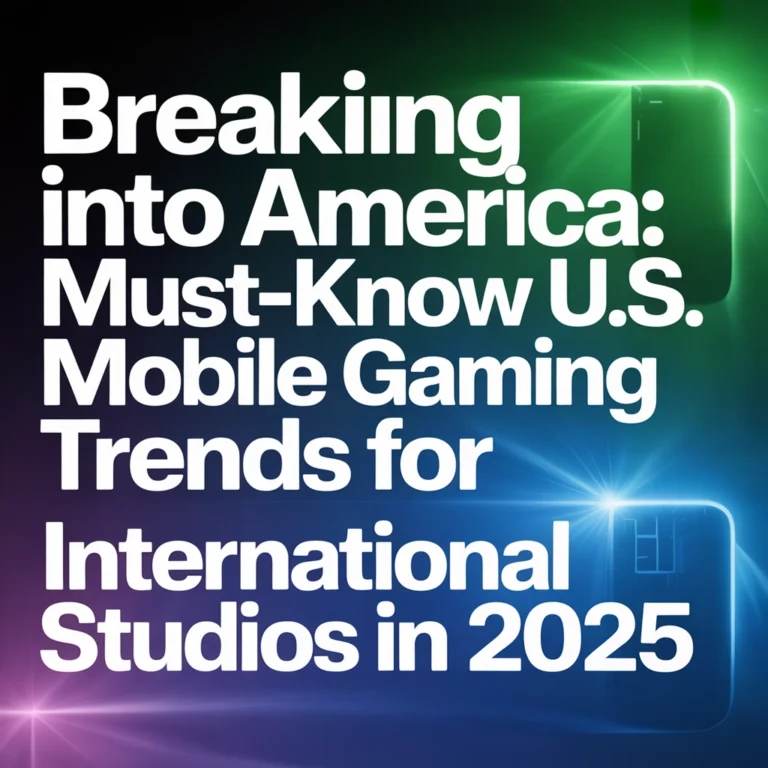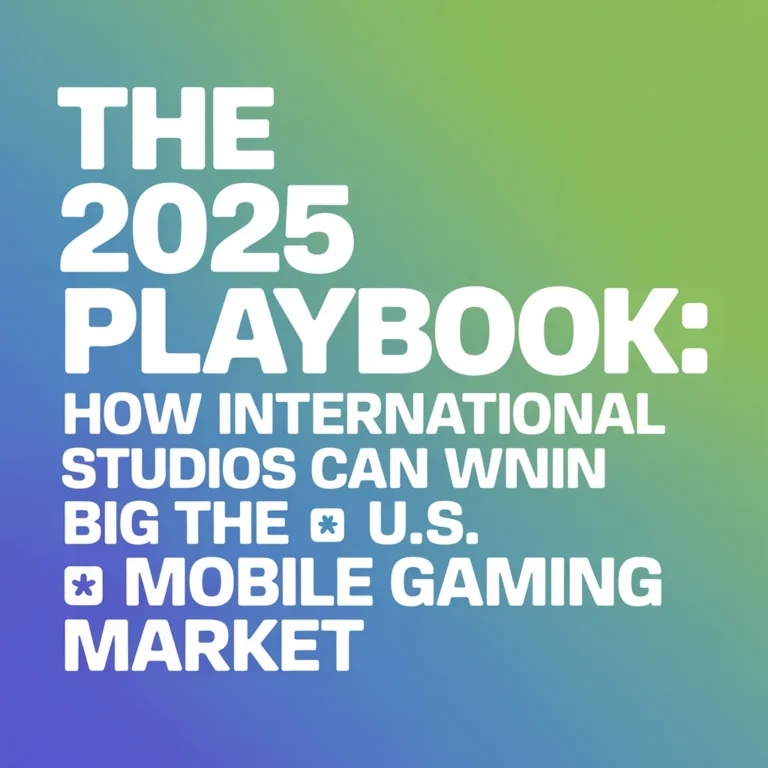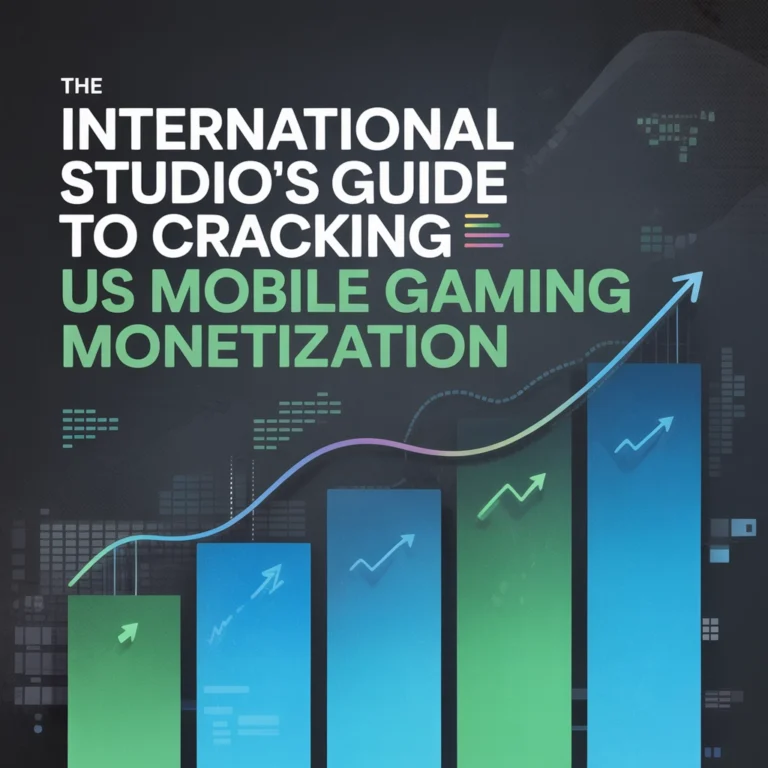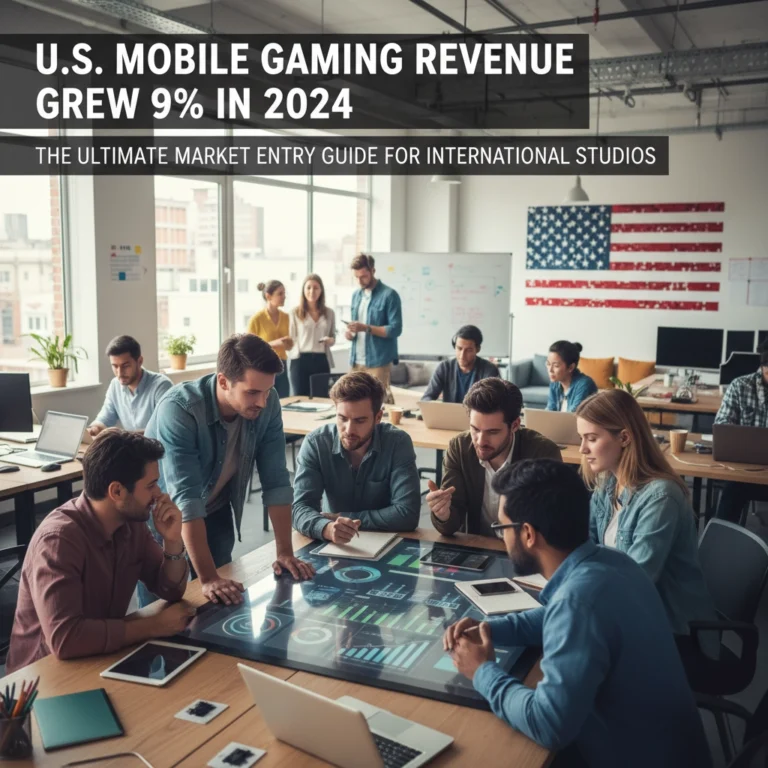RPGs vs Strategy Games: Which Genre Will Dominate US Mobile Revenue in 2025?

The mobile gaming landscape just witnessed a seismic shift that's sending shockwaves through international studios worldwide. For the first time in years, Strategy games have overtaken RPGs as the top-grossing mobile category globally, generating $10.6 billion in the first half of 2025 compared to RPGs' $9.3 billion. But here's the million-dollar question every international studio is asking: What does this mean for the lucrative US market?
If you're an international mobile game developer eyeing American players' wallets, this genre showdown isn't just industry gossip: it's your roadmap to 2025 success. Let's dive deep into the data, demographics, and dollars that will determine which genre rules the US mobile gaming throne.
The Great Revenue Reversal: What the Numbers Really Tell Us
The numbers don't lie, and they're telling a fascinating story. Strategy games didn't just edge out RPGs: they dominated the first half of 2025 with unprecedented momentum. This represents a complete reversal from previous years when RPGs consistently held the crown.
But here's where it gets interesting for US-focused studios: American players are driving this shift more aggressively than any other region. US mobile gamers spent $2.8 billion on Strategy games in the first six months of 2025, a staggering 34% increase year-over-year. Meanwhile, RPG spending in the US grew only 8% to $2.4 billion.

The writing on the wall is clear: Strategy games are experiencing explosive growth in the US market while RPGs are hitting a plateau. But before you pivot your entire development strategy, let's break down exactly why this is happening and what it means for your studio.
RPGs in America: The Steady Revenue Giant with Warning Signs
RPGs built their empire on one fundamental strength: player obsession. American RPG players don't just play games: they live in them. The average US RPG player spends 47 minutes per session and returns 12 times per week. That's engagement gold.
The RPG Monetization Machine:
- Gacha systems generate 67% of RPG revenue in the US
- Character progression drives 89% of in-app purchases
- Story content expansions maintain long-term spending
- Seasonal events create predictable revenue spikes
US RPG players also have the highest Average Revenue Per User (ARPU) of any mobile gaming genre at $47.80 per month. These aren't casual spenders: they're digital collectors willing to drop serious cash on their favorite characters and gear.
But here's the concerning trend: new player acquisition for RPGs is slowing dramatically. While existing players continue spending, the pipeline of fresh blood is drying up. US RPG downloads declined 23% in 2024, and early 2025 data shows this trend accelerating.
The RPG Challenge in 2025:
- Market saturation with similar fantasy themes
- Rising development costs for high-quality content
- Longer monetization cycles requiring patient investment
- Demographic aging as younger players prefer competitive experiences
Strategy Games: The New American Obsession
Strategy games cracked the code on something RPGs have historically struggled with: social competition. American players are gravitating toward games that blend strategic thinking with real-time social interaction, and the revenue numbers prove it.

What's Driving Strategy Game Success in the US:
Competitive Social Mechanics: Alliance warfare, guild competitions, and real-time battles tap into Americans' competitive spirit. 73% of US Strategy game players participate in guild activities compared to only 31% of RPG players.
Shorter Engagement Loops: While RPG sessions are long, Strategy games win with frequency. The average US Strategy player opens their game 18 times per day for 8-minute sessions. That's more monetization opportunities and stronger habit formation.
Instant Gratification: Strategy games deliver immediate tactical satisfaction while building toward long-term strategic goals. This dual-reward system perfectly matches American gaming psychology.
The Strategy Revenue Formula:
- Resource management drives 43% of purchases
- Time acceleration generates consistent daily spending
- Competitive advantages create FOMO-driven purchasing
- Territory expansion maintains long-term engagement
Player Demographics: The Tale of Two Audiences
Understanding who plays what is crucial for international studios targeting the US market. The demographic split reveals why Strategy games are surging.
RPG Players in America:
- Age: 67% are 25-40 years old
- Gender: 52% male, 48% female
- Income: Higher disposable income ($75K+ annually)
- Gaming habits: Prefer deep, single-player experiences
- Spending pattern: High-value, infrequent purchases
Strategy Players in America:
- Age: 71% are 18-35 years old
- Gender: 64% male, 36% female
- Income: Broader income range ($45K-$85K annually)
- Gaming habits: Social, competitive, multi-session daily play
- Spending pattern: Lower-value, frequent micro-transactions

The demographic data reveals a critical insight: Strategy games are capturing younger American players who will drive mobile gaming revenue for the next decade. While RPGs dominate current high-spenders, Strategy games are building the foundation for future market dominance.
Monetization Strategies: Different Genres, Different Wallets
Here's where international studios need to pay close attention: monetization strategies that work for RPGs can fail spectacularly in Strategy games, and vice versa.
RPG Monetization in the US:
- Premium currency for character summons
- Battle passes for exclusive content
- Storage expansions for collectors
- Cosmetic upgrades for character customization
Average purchase: $12.80
Purchase frequency: 3.2 times per month
Strategy Game Monetization in the US:
- Resource bundles for base building
- Speed boosts for competitive advantage
- Premium units for tactical superiority
- Alliance benefits for group advantages
Average purchase: $4.50
Purchase frequency: 8.7 times per month
The math is fascinating: Strategy games generate more revenue through volume, while RPGs rely on higher-value transactions. For international studios, this means Strategy games offer more predictable, consistent revenue streams, while RPGs provide higher-risk, higher-reward opportunities.
The 2025 Prediction: Strategy Takes the Crown
Based on current trajectory and market fundamentals, Strategy games will dominate US mobile revenue in 2025. Here's why the math favors Strategy:
Growth Momentum: Strategy games are accelerating while RPGs are plateauing
Demographic Trends: Younger players prefer competitive, social experiences
Market Expansion: Strategy games appeal to broader audience segments
Monetization Efficiency: More frequent, predictable revenue streams
Our projection: Strategy games will capture 37% of US mobile gaming revenue in 2025, while RPGs will hold 31%: a complete reversal from 2023's numbers.

Actionable Strategies for International Studios
If You're Developing Strategy Games:
- Focus on alliance mechanics that encourage group spending
- Implement real-time competitive events weekly
- Create territory-based progression systems
- Design for short, frequent play sessions
- Emphasize social features over single-player content
If You're Committed to RPGs:
- Innovate beyond fantasy themes to stand out
- Reduce time-to-monetization in your progression systems
- Add competitive multiplayer elements to attract younger players
- Focus on IP partnerships for differentiation
- Implement cross-platform progression for broader appeal
The Hybrid Approach:
Smart studios are already blending genres. Strategy-RPG hybrids combining character collection with competitive alliance warfare are showing 40% higher retention rates than pure-genre games in the US market.
The Bottom Line for International Studios
The US mobile gaming market is sending a clear signal: competitive, social Strategy games are the future, but premium RPG experiences still have their place. The winners in 2025 will be studios that understand these genre dynamics and design accordingly.
For international developers eyeing the American market, the data is your compass. Strategy games offer the clearest path to mass market success, while RPGs provide opportunities for high-value niche dominance. Choose your battlefield wisely: the US mobile gaming crown is up for grabs, and 2025 will determine which genre wears it.
The revolution is happening now. The question isn't whether the landscape is changing: it's whether your studio will lead the charge or get left behind.






